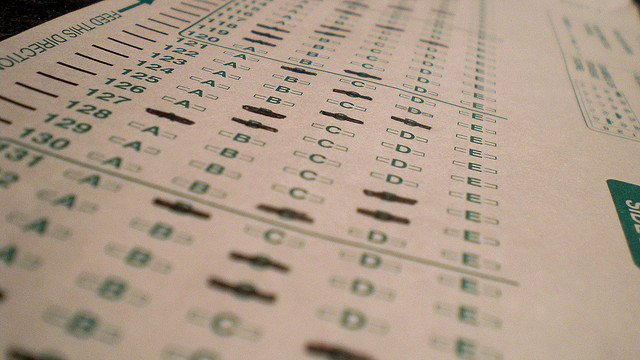How Does Testing Affect Detroit Classrooms?
Hear from a Detroit teacher about standardized testing and its effect on learning.

Stephen Henderson talks with Chastity Pratt Dawsey and William Weir about the state of education in Detroit and Michigan. Dawsey is an Education Reporter for Bridge Magazine, and William Weir is a Detroit teacher whose classroom she observed for her article One Teacher, 25 Kids, and the Enormous Challenge of Turning Around Detroit Schools. Weir teaches at the Schulze Academy for Technology and the Arts, a public elementary school. They talk about the role of testing, and how teachers struggle to help students despite rigid curriculums.
- Meeting students where they are: Weir says that he tries to help students relate to the curriculum material whenever he can by making it applicable to their lives. He says that students
- Negative reinforcement loop: Weir believes that when kids have to repeatedly take tests that they know they are doing badly on, they suffer psychological consequences. He says that this reinforces failure, and “has to affect their psyche in some type of way”.
- Expressing intelligence: Weir says that his students are very intelligent, but that they are not able to express their intelligence in a way that is compatible with the requirements of the curriculum.
- Pressure on teachers: Weir and Dawsey both say that excessive testing puts pressure on teachers and schools to fulfill rigid criteria, and that the consequences attached to testing are high. Weir says that this changes the relationship between students and teachers, because it turns a student who does badly on tests into the teacher’s enemy.
- What is the solution?: Dawsey says that this is a difficult problem to solve, because there are many layers of testing, including state and national, because there is a lack of creativity in education policy, and because of internal problems in Detroit schools, such as the number of kids in special needs education.
Click the audio link above to hear the full conversation.
